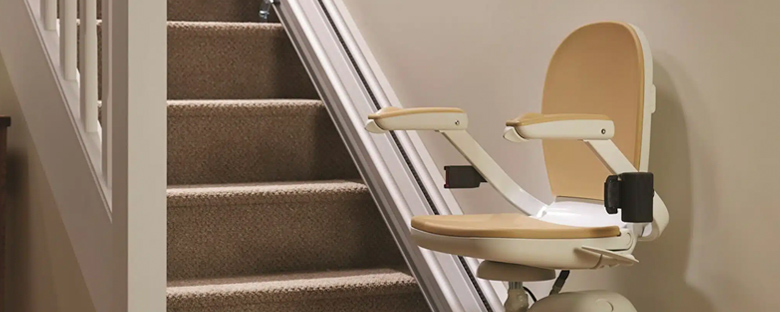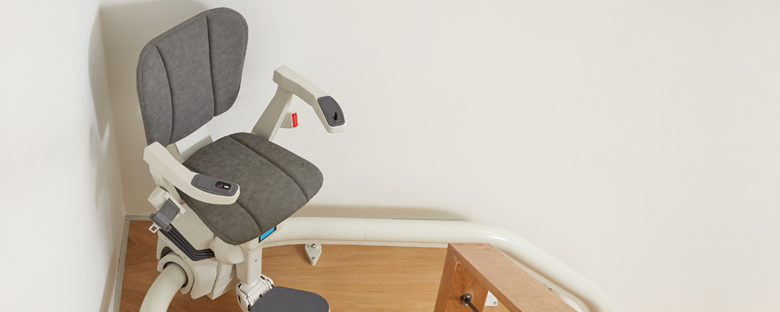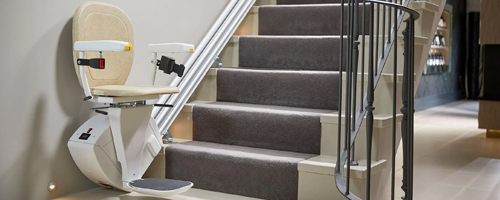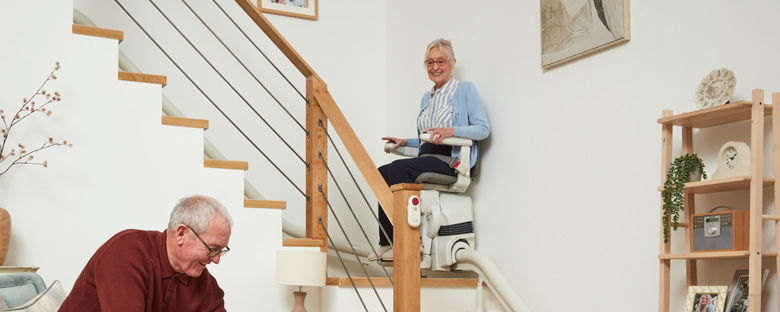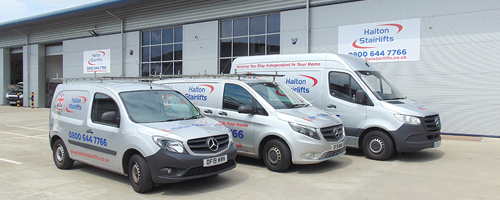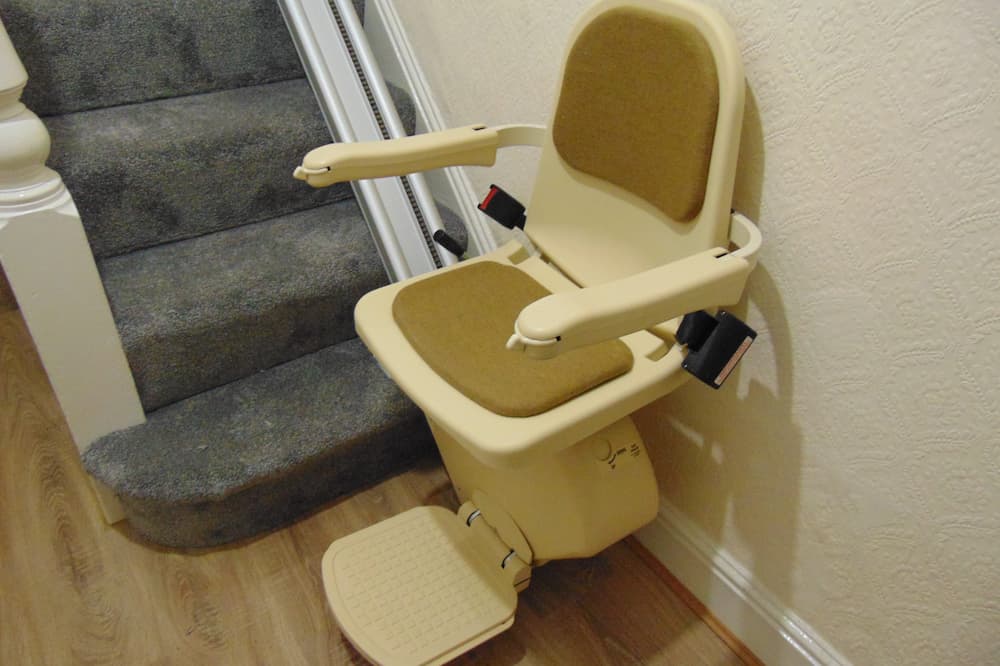Dementia is a challenging condition that affects millions of people worldwide, impacting not only their cognitive abilities but also their daily lives.
As the disease progresses, dementia can affect a person’s ability to navigate a staircase safely, increasing the risk of accidents, among other key symptoms.
Safety around stairs becomes a crucial concern for both caregivers and those living with dementia. In this comprehensive guide, we will explore the challenges posed by stairs for a person with dementia and provide practical tips and solutions to enhance safety in the home environment.
Understanding the Challenges
A person with dementia often experiences a decline in cognitive function, memory loss, and difficulties with spatial awareness.
Navigating stairs becomes a complex task as individuals may struggle to remember the proper sequence of steps or forget to use handrails.
Their diminished ability to assess depth perception can affect mobility overall and contribute to an increased risk of falls on stairs. This is why it is so vital to put the correct measures in place to keep them safe.
While this is not the case with every person with dementia, it is important that you are accommodating to the ways in which dementia can affect someone and prepare for all eventualities.
The Importance of Assessing Stair Safety
Before implementing safety measures, it is essential to conduct a thorough assessment of the existing stair environment to ensure there are no trip hazards and to keep your stairs free of clutter. Factors such as staircase design, lighting, and the condition of handrails should be carefully evaluated.
Additionally, consider the person’s specific needs and abilities, as the severity of dementia can vary as the illness affects people in many different ways. If your loved one is experiencing difficulties with physical movement the following may be good measures to take surrounding safety on your staircase.
Staircase Design and Modifications
Ensure that sturdy handrails and floor coverings are installed on your staircase. Handrails provide essential support and aid in maintaining balance while ascending or descending stairs. Check their stability regularly and make any necessary repairs.
Apply non-slip strips or paint to the steps to reduce the risk of slips, trips, and falls. Slippery surfaces can be potential hazards for dementia patients, so taking preventive measures is crucial.
Ensuring that your staircase has no loose or worn carpets and that no objects are lying in the surrounding area can avoid serious injury to the member of your household who may be suffering from dementia.
Lighting Considerations
When housing a family member with dementia, you should look to improve lighting around your staircase to avoid serious accidents. Proper lighting helps individuals with dementia better perceive the depth of the steps and reduces the likelihood of missteps.
Consider installing motion-activated lights along the staircase to automatically illuminate the path when someone approaches. This can be especially helpful during nighttime or in dimly lit areas.
Implementing Safety Gates
Install safety gates at the top and bottom of the staircase to prevent accidental falls. These gates can be particularly effective for individuals in the early stages of dementia who may still possess some mobility.
Safety gates act as a physical barrier, preventing loved ones with dementia from unintentionally navigating the staircase without assistance.
Falls can result in injuries, including fractures or head trauma, and may lead to a decline in overall health. Installing gates provides an added layer of protection to mitigate the risk of accidents.
Install a Stairlift Unit With Halton Stairlifts
Stair safety is a paramount concern for your loved ones with dementia, as the challenges associated with cognitive decline can make navigating stairs a risky endeavour. Among the various solutions available to improve stair safety, stairlifts stand out as a practical and effective option.
These devices not only address the physical challenges of stair navigation but also contribute to the overall well-being and independence of your loved ones. At Halton Stairlifts, we have a selection of great stairlift units to choose from that can assist with all facets of daily activity.
The Benefits of Using Stairlifts and Mobility Aids
One of the primary advantages of stairlifts is their ability to eliminate the physical strain associated with climbing stairs. Some dementia patients may experience muscle weakness, joint pain, or balance issues, making stair ascent and descent particularly challenging.
Stairlifts can be tailored to suit the specific needs and layout of the home. Whether the staircase is straight or curved, stairlifts can be installed to accommodate various configurations.
This customisation ensures that people can continue to access all areas of their homes safely, regardless of the staircase’s design.
Stairlifts provide a smooth and effortless ride, reducing the physical demands on the individual and minimising the risk of falls or accidents.
If you are looking to buy a straight or curved stairlift, our team can assist you with this task, providing you with the advice necessary to make the right decision for you.
Maintaining a sense of independence is crucial for people with dementia. Stairlifts empower them to navigate their homes without constant assistance, fostering a greater sense of autonomy. With the simple push of a button, users can effortlessly move between different levels of their homes, promoting a more active and self-reliant lifestyle.
Modern stairlifts come equipped with advanced safety features designed to ensure a secure and comfortable ride. These features may include seat belts, swivel seats for easy entry and exit, and sensors that detect obstructions on the stairs. The incorporation of these safety measures provides peace of mind for both people with dementia and their caregivers.
Considering Stairlifts as Part of a Safety Plan
While stairlifts offer significant advantages in improving stair safety for people with dementia, it’s essential to view them as part of a broader safety plan.
No matter if you are a carer for a dementia patient or have a loved one suffering from the illness, these are very important to take into account.
Combining stairlift installation with other modifications, such as proper lighting, handrails, and visual cues, can create a comprehensive approach to home safety for members of your family with reduced mobility.
By eliminating the need to navigate stairs independently, stairlifts significantly reduce the risk of falls – a common concern for people with dementia.
Falls can lead to severe injuries and negatively impact the overall well-being of the individual. Stairlifts provide a reliable and secure alternative, mitigating the potential dangers associated with stair use.
Stairlifts are designed with user-friendly controls, making them accessible for people with varying levels of cognitive function.
Simple buttons or switches are typically used to operate the lift, minimising confusion, and frustration. The intuitive design of stairlift controls ensures a smooth and stress-free experience for users with dementia.
Stairifts present many great advantages when implementing them as a part of your stair safety plan however it is important to make a note of the price that some of these units may cost to ensure that you are prepared to make the final investment.
Final Note
As dementia progresses, adapting the home environment to ensure stair safety becomes increasingly important. By understanding the challenges posed by stairs and implementing practical modifications, caregivers can create a safer living space for their family members.
From assessing the staircase design to incorporating visual and tactile cues, each step plays a crucial role in minimising the risk of falls and enhancing overall safety.
Taking a proactive approach to stair safety is a compassionate and necessary measure that can significantly improve the quality of life for both the caregiver and their loved one.
If you are in the considering renting a stairlift, please do not hesitate to get in touch with our team and we will be able to help with your decision.

Neil is the founder of Halton Stairlifts. He has years of experience installing stairlifts across the UK. With an eagerness to help those with mobility issues get up the stairs, Neil understands how important it is for a seamless and straightforward approach to installing stairlifts to help those in need quickly.
